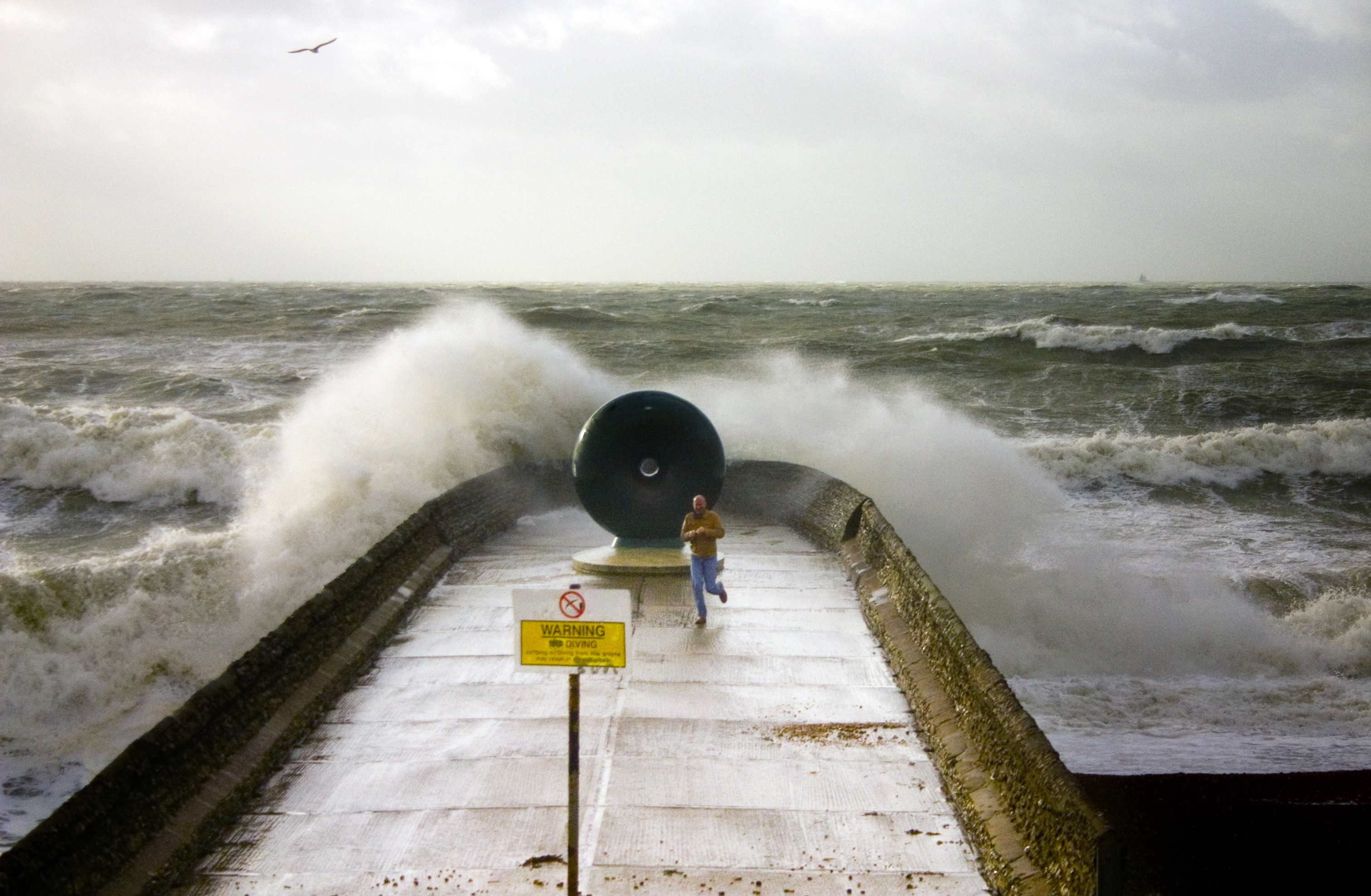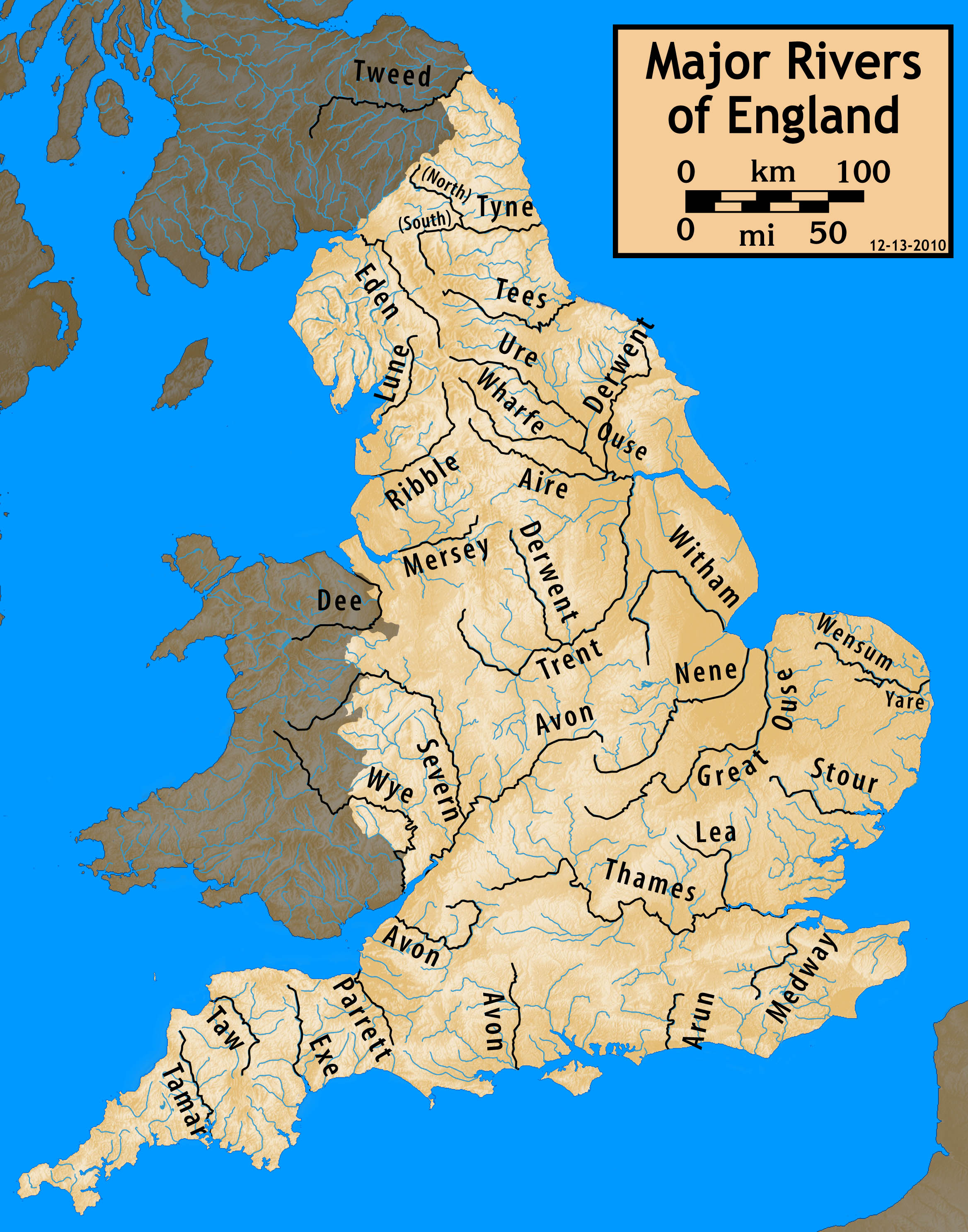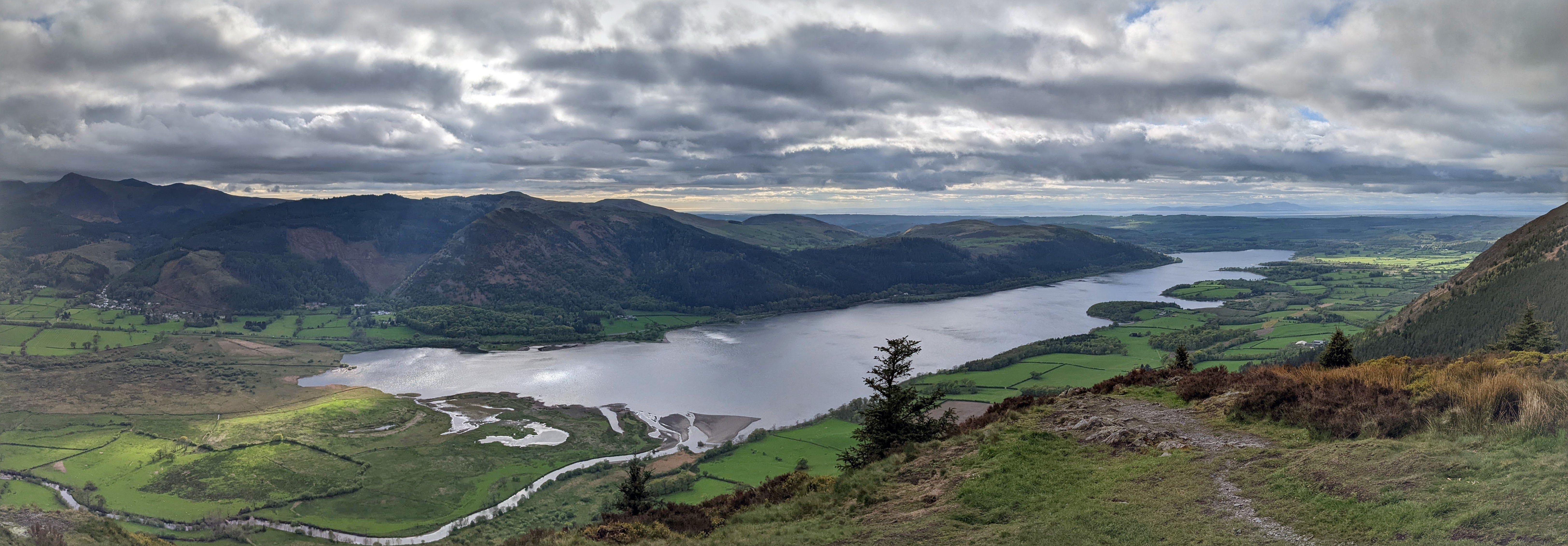|
River Derwent, Cumbria
The Derwent is a famous river in the county of Cumbria in the north of England; it rises in the Lake District and flows northwards through two of its principal lakes, before turning sharply westward to enter the Irish Sea at Workington The name ''Derwent'' is shared with three other English rivers and is thought to be derived from a Celtic word for "oak trees" (an alternative is ''dour'' "water" and ''(g)-went'' "white / pure". The river's Old Welsh name was ''Derwennydd'' and it is believed to be to be the setting of the medieval Welsh lullaby Dinogad's Smock. The river rises at Sprinkling Tarn underneath Great End and flows in a northerly direction through the valley of Borrowdale, before entering Derwentwater, which it exits to the north just outside Keswick and is joined by the waters of the River Greta. The Derwent then enters Bassenthwaite Lake at its southern end; it exits it at its northern end, thereafter flowing generally westward to Cockermouth, where the River ... [...More Info...] [...Related Items...] OR: [Wikipedia] [Google] [Baidu] |
Grange In Borrowdale
Grange, often called Grange in Borrowdale, is a village in Borrowdale in the English Lake District. It lies just off the B5289 road to the south of Derwent Water and south of Keswick, in the county of Cumbria, historically part of Cumberland, Historically part of Cumberland, the village is overlooked by Grange Fell and Castle Crag, which flank either side of the narrow section of Borrowdale in which it sits. Its origins date back to medieval times, when the monks of Furness Abbey built a monastic grange on the site. The double-arched bridge that links the village to the B5289 across the River Derwent was built in 1675. Holy Trinity Church followed in 1861. The novelist Hugh Walpole owned Brackenburn, a large house about to the north of Grange, and lived there from 1924 until his death in 1941. Governance Grange in Borrowdale is within the Copeland UK Parliamentary constituency. Trudy Harrison is the Member of Parliament. Before Brexit for the European Parliament its re ... [...More Info...] [...Related Items...] OR: [Wikipedia] [Google] [Baidu] |
Sprinkling Tarn
Sprinkling Tarn is a body of water at the foot of Great End, in the Southern Fells in Lake District, from Seathwaite, Cumbria, England. It is noted for its trout Trout are species of freshwater fish belonging to the genera '' Oncorhynchus'', '' Salmo'' and '' Salvelinus'', all of the subfamily Salmoninae of the family Salmonidae. The word ''trout'' is also used as part of the name of some non-salm ... and an introduced rare fish, vendace. Formerly known also as Sparkling Tarn. It is known as the wettest place of England with an annual precipitation of over . References Lakes of the Lake District Allerdale {{cumbria-geo-stub ... [...More Info...] [...Related Items...] OR: [Wikipedia] [Google] [Baidu] |
November 2009 Great Britain And Ireland Floods
The 2009 Great Britain and Ireland floods were a weather event that affected parts of Great Britain and Ireland throughout November and into December 2009. November was the wettest month across the United Kingdom since records began in 1914 and had well above average temperatures. The worst affected area in Great Britain was the English county of Cumbria. The Irish counties of Clare, Cork, Galway and Westmeath were among the worst affected areas of Ireland. European windstorms bringing heavy rain and gale-force winds caused damage and flooding to the south of Great Britain on 13–14 November. Unsettled weather continued across the south and later to the north. On 19–20 November, many towns and villages in Cumbria and Dumfries and Galloway were affected. A number of bridges collapsed, one of which led to the death of a police officer, who was standing on the bridge when it collapsed. Another death occurred on 21 November as a canoeist was trapped against a tree near Poundsg ... [...More Info...] [...Related Items...] OR: [Wikipedia] [Google] [Baidu] |
List Of Rivers Of England
This is a list of rivers of England, organised geographically and taken anti-clockwise around the English coast where the various rivers discharge into the surrounding seas, from the Solway Firth on the Scottish border to the Welsh Dee on the Welsh border, and again from the Wye on the Welsh border anti-clockwise to the Tweed on the Scottish border. Tributaries are listed down the page in an upstream direction, i.e. the first tributary listed is closest to the sea, and tributaries of tributaries are treated similarly. Thus, in the first catchment below, the River Sark is the lowermost tributary of the Border Esk and the Hether Burn is the lowermost tributary of the River Lyne. The main stem (or principal) river of a catchment is labelled as (MS), left-bank tributaries are indicated by (L), right-bank tributaries by (R). Note that in general usage, the 'left (or right) bank of a river' refers to the left (or right) hand bank, as seen when looking downstream. Where a named river ... [...More Info...] [...Related Items...] OR: [Wikipedia] [Google] [Baidu] |
Bridgefoot
Bridgefoot is a village in Cumbria, historically part of Cumberland, near the Lake District National Park in England. It is situated at the confluence of the River Marron and Lostrigg Beck, approximately 1 mile south of the River Derwent. To the south it is seamlessly joined with the village of Little Clifton. Governance Bridgefoot, is part of the Workington constituency of the UK parliament. The current Member of Parliament is Mark Jenkinson, a member of the Conservative Party. The Labour Party has won the seat in every general election since 1979; the Conservative Party has only been elected once in Workington since the Second World War: in the 1976 Workington by-election. For the European Parliament residents in Bridgefoot voted to elect MEP's for the North West England constituency before Brexit in 2020. For Local Government purposes it is in the ''Dalton Ward'' of Allerdale Borough Council and the ''Cockermouth South Division'' of Cumbria County Council Cumbria C ... [...More Info...] [...Related Items...] OR: [Wikipedia] [Google] [Baidu] |
Derventio (Papcastle)
Derventio (sometimes called ''Derventio Carvetiorum'' or ‘’’Dumnerozventio Caruntaremo’’’) was a Roman settlement at Papcastle on the river Derwent near Cockermouth, Cumbria, England. It was the site of a Roman fort, which was originally built in timber and rebuilt in stone. There was also a civilian settlement (''vicus''). A major Roman road linked Derventio to Old Carlisle near Wigton and Carlisle itself (Luguvalium) to the northeast, whilst a separate road led northwest to the coastal fort of Alauna just north of Maryport. In the 12th century the Normans removed Roman stonework from the site and used it to build Cockermouth Castle. Conservation and excavation The fort was known to antiquarians from William Camden onwards; the first modern excavation was by R. G. Collingwood in 1912. A further dig in 1961-1962 led to the immediate designation of the site of the forts and part of the ''vicus'' as an ancient monument. These excavations suggested Papcastle was o ... [...More Info...] [...Related Items...] OR: [Wikipedia] [Google] [Baidu] |
Papcastle
Papcastle is a village and civil parish in the borough of Allerdale in the English county of Cumbria. The village is now effectively a northern extension of Cockermouth, which lies to the south of the River Derwent. It has its own parish council and lies within Bridekirk Parish for Church of England purposes. In 2001 it had a population of 406, reducing to 385 at the 2011 Census. The name of Papcastle is said to be a compound formed from Old Norse and Old English ''papi''+''cæster'', meaning 'the Roman fort inhabited by a hermit'. Remains of Roman Derventio It has been known for some time that there was a Roman presence at Papcastle. It was the site of a Roman fort called ''Derventio'', which was originally built in timber and rebuilt in stone.The name is known from the Ravenna Cosmography. See There was also a civilian settlement (''vicus''). The remains of the forts and part of the vicus were designated an ancient monument in 1992. More parts of the ''vicus'' were excavat ... [...More Info...] [...Related Items...] OR: [Wikipedia] [Google] [Baidu] |
The Prelude
''The Prelude or, Growth of a Poet's Mind; An Autobiographical Poem '' is an autobiographical poem in blank verse by the English poet William Wordsworth. Intended as the introduction to the more philosophical poem ''The Recluse,'' which Wordsworth never finished, ''The Prelude'' is an extremely personal work and reveals many details of Wordsworth's life. Wordsworth began ''The Prelude'' in 1798, at the age of 28, and continued to work on it throughout his life. He never gave it a title, but called it the "Poem (title not yet fixed upon) to Coleridge" in his letters to his sister Dorothy Wordsworth. The poem was unknown to the general public until the final version was published three months after Wordsworth's death in 1850. Its present title was given to it by his widow Mary. Versions There are three versions of the poem: * The 1799 ''Prelude'', called the ''Two-Part Prelude'', composed 1798–1799, containing the first two parts of the later poem. * The 1805 ''Prelude'', which w ... [...More Info...] [...Related Items...] OR: [Wikipedia] [Google] [Baidu] |
William Wordsworth
William Wordsworth (7 April 177023 April 1850) was an English Romantic poet who, with Samuel Taylor Coleridge, helped to launch the Romantic Age in English literature with their joint publication ''Lyrical Ballads'' (1798). Wordsworth's ''magnum opus'' is generally considered to be ''The Prelude'', a semi-autobiographical poem of his early years that he revised and expanded a number of times. It was posthumously titled and published by his wife in the year of his death, before which it was generally known as "the poem to Coleridge". Wordsworth was Poet Laureate from 1843 until his death from pleurisy on 23 April 1850. Early life The second of five children born to John Wordsworth and Ann Cookson, William Wordsworth was born on 7 April 1770 in what is now named Wordsworth House in Cockermouth, Cumberland, (now in Cumbria), part of the scenic region in northwestern England known as the Lake District. William's sister, the poet and diarist Dorothy Wordsworth, to whom he wa ... [...More Info...] [...Related Items...] OR: [Wikipedia] [Google] [Baidu] |
Bassenthwaite Lake
Bassenthwaite Lake is one of the largest water bodies in the English Lake District. It is long and narrow, approximately long and wide, but is also extremely shallow, with a maximum depth of about . It is the only body of water in the Lake District to use the word ''"lake"'' in its name, all the others being ''"waters"'' (for example, Derwentwater), ''"meres"'' (for example, Windermere) or ''"tarns"'' (for example, Dock Tarn). It is fed by, and drains into, the River Derwent. The lake lies at the foot of Skiddaw, near the town of Keswick. Some maps dating from the 18th century do in fact mark this lake with the name ''Bassenwater'', and the use of the name ''Broadwater'' for this lake is also attested. The A66 dual carriageway runs roughly north–south along the western side of the lake. The lay-bys are popular spots for photographers and bird watchers looking for osprey. The section running south towards Keswick was built along the course of the former Cockermouth, K ... [...More Info...] [...Related Items...] OR: [Wikipedia] [Google] [Baidu] |
Keswick, Cumbria
Keswick ( ) is a market town and civil parishes in England, civil parish in the Allerdale Borough in Cumbria, England. Historic counties of England, Historically, until 1974, it was part of Cumberland. It lies within the Lake District National Park, Keswick is just north of Derwentwater and is from Bassenthwaite Lake. It had a population of 5,243 at the United Kingdom census, 2011, 2011 census. There is evidence of Prehistoric Cumbria, prehistoric occupation of the area, but the first recorded mention of the town dates from the 13th century, when Edward I of England granted a Royal charter, charter for Keswick's market, which has maintained a continuous 700-year existence. The town was an important Coal mining in the United Kingdom, mining area, and from the 18th century has been known as a holiday centre; tourism has been its principal industry for more than 150 years. Its features include the Moot Hall, Keswick, Moot Hall; a modern theatre, the Theatre by the Lake; one of Br ... [...More Info...] [...Related Items...] OR: [Wikipedia] [Google] [Baidu] |
Derwentwater
Derwentwater, or Derwent Water, is one of the principal bodies of water in the Lake District National Park in north west England. It lies wholly within the Borough of Allerdale, in the county of Cumbria. The lake occupies part of Borrowdale and lies immediately south of the town of Keswick. It is both fed and drained by the River Derwent. It measures approximately long by wide and is some deep. There are several islands within the lake, one of which is inhabited. Derwentwater is a place of considerable scenic value. It is surrounded by hills (known locally as fells), and many of the slopes facing Derwentwater are extensively wooded. A regular passenger launch operates on the lake, taking passengers between various landing stages. There are seven lakeside marinas, the most popular stops being Keswick, Portinscale and the Lodore Falls, from which boats may be hired. Recreational walking is a major tourist activity in the area and there is an extensive network of footp ... [...More Info...] [...Related Items...] OR: [Wikipedia] [Google] [Baidu] |



